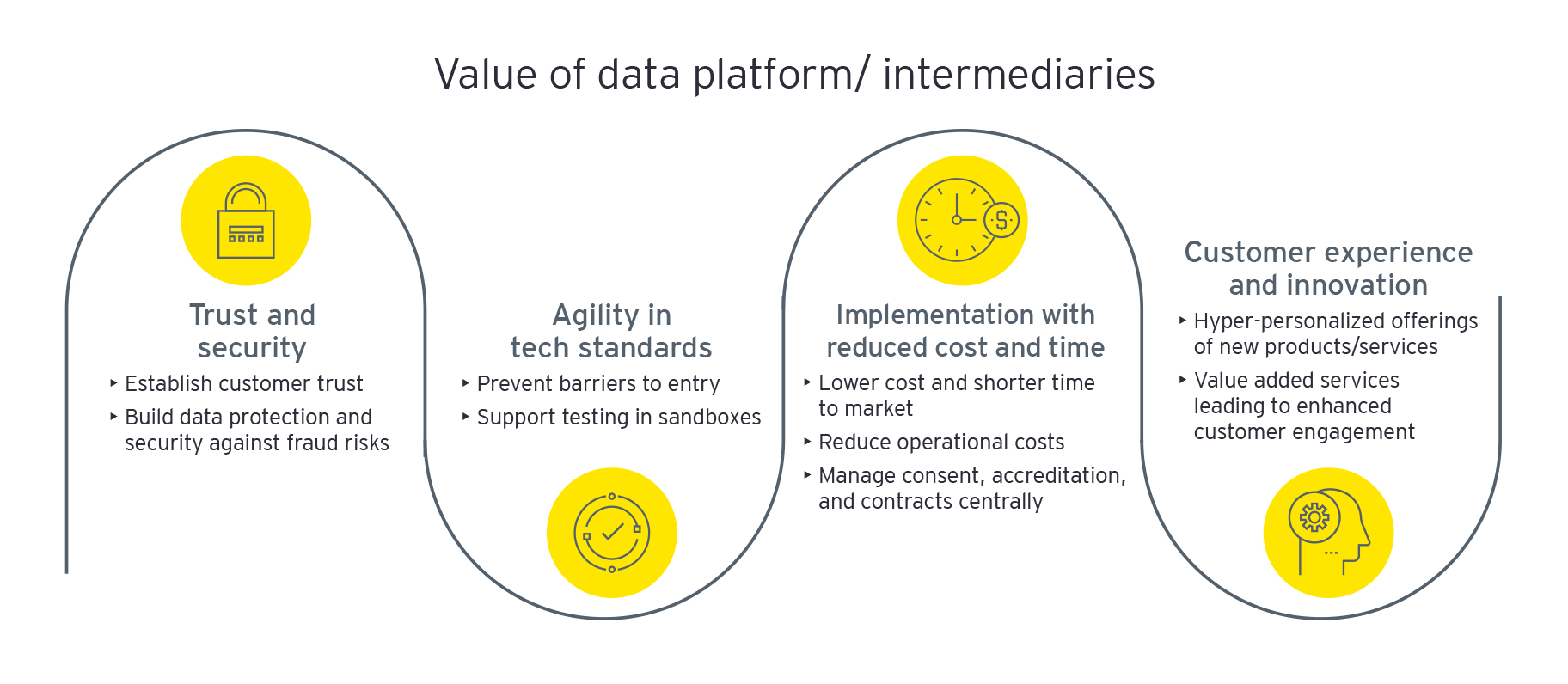According to Symcor and EY Canada’s 2023 survey (“Three Data-Backed Considerations for your Open Banking Strategy”), Canadian customers’ willingness to share data is increasing year over year. This points to a propensity for open banking (OB) that can leverage this data sharing to provide better products and services to customers. For Canada to accelerate its open banking implementation, it’s important to leverage learnings from other jurisdictions and use that to define Canada’s pathway to success.
What are the key learnings?
1. Standardize APIs to enable a technically agile network. If all ecosystem participants use the same interface specification (in the form of standard APIs), complexity is reduced greatly and the need for translation and unification is reduced, leading to faster adoption and technical agility. The UK saw that implementation-ready, open API specifications make adoption easier, compared to vague API specification guidelines in the EU that seemed to create room for incompatibilities.
2. Implement a standardized accreditation framework to create transparency and reduce risk. The Canadian data recipient and fintech market is expanding, and we can expect to see more participants joining the ecosystem as Open banking is implemented. A common accreditation framework that is flexible to apply conditions based on varying participant scope and risk levels can help reduce barriers to entry and costs and minimize systemic risks in the ecosystem¹. Bilateral, custom accreditation frameworks or ones that are too rigid can create friction in the market, making it hard for incumbents and new entrants to scale their business and operations. In the first six months of Australia’s open banking and Consumer Data Right (CDR) regime, only six data recipients had been granted accreditation, (Fintech News Singapore 2021), leading to calls for a tiered accreditation system. Positively, participants in the Canadian open banking working groups considering accreditation guidelines have called for alternate options, such as sponsorship and agency models.
3. Reduce complexity of regulatory mandates to promote open banking adoption. As seen in countries where open banking is heavily regulated, such as the CDR in Australia, complex mandates lead to expensive implementations which subsequently drive down adoption and reduce collaboration in the ecosystem. In contrast, simplified regulations and eased bureaucratic processes in countries like Brazil, have made it easier for key players to enter the ecosystem and provide innovative products and services². As such, a principles-based open banking regulation in Canada would enable flexibility for ecosystem participants to collaborate and develop standards.




